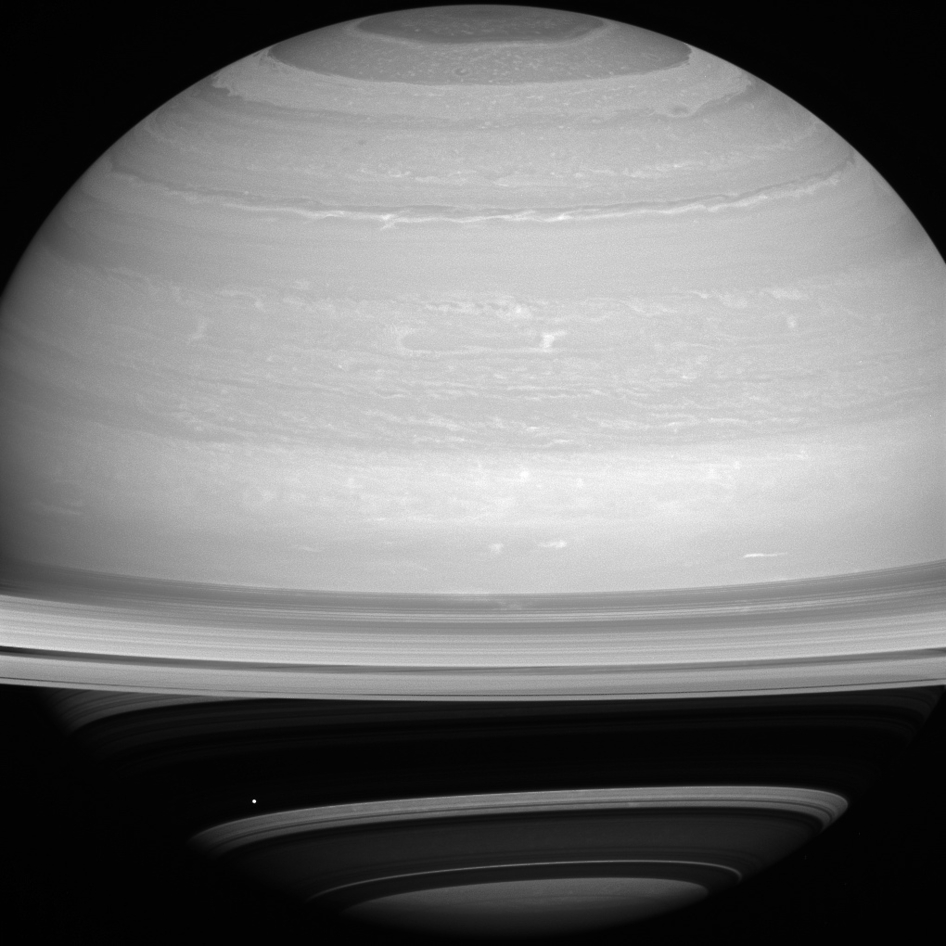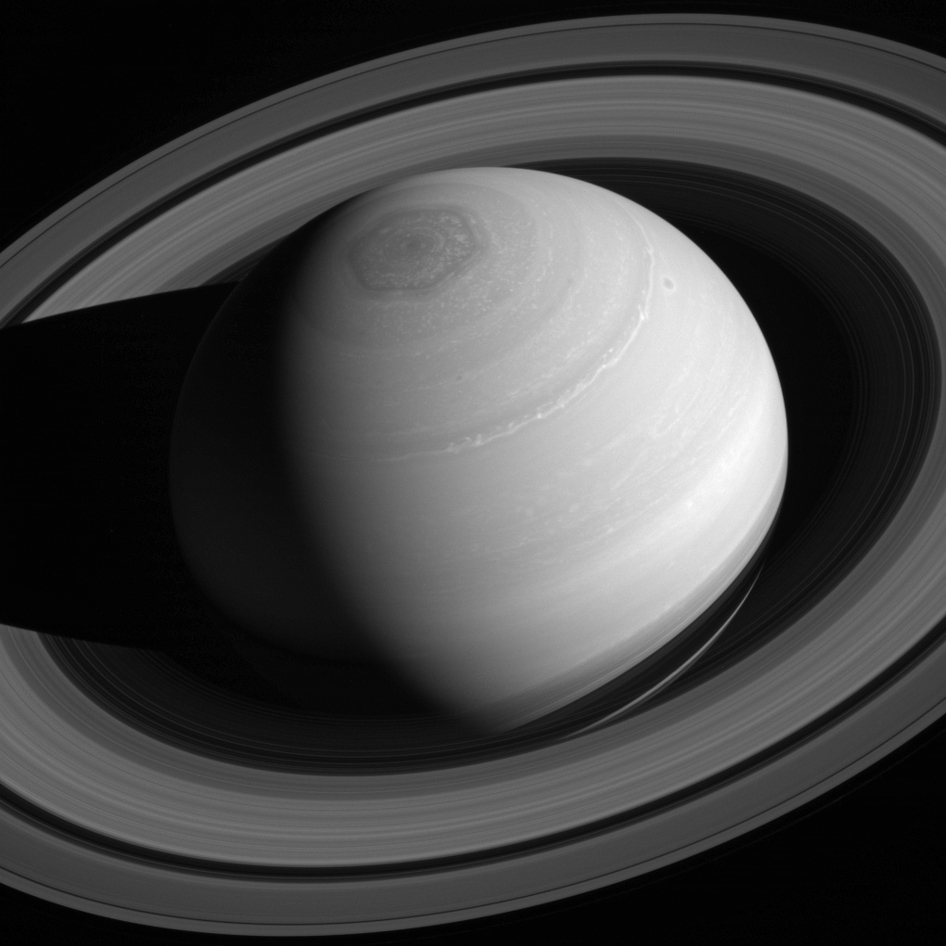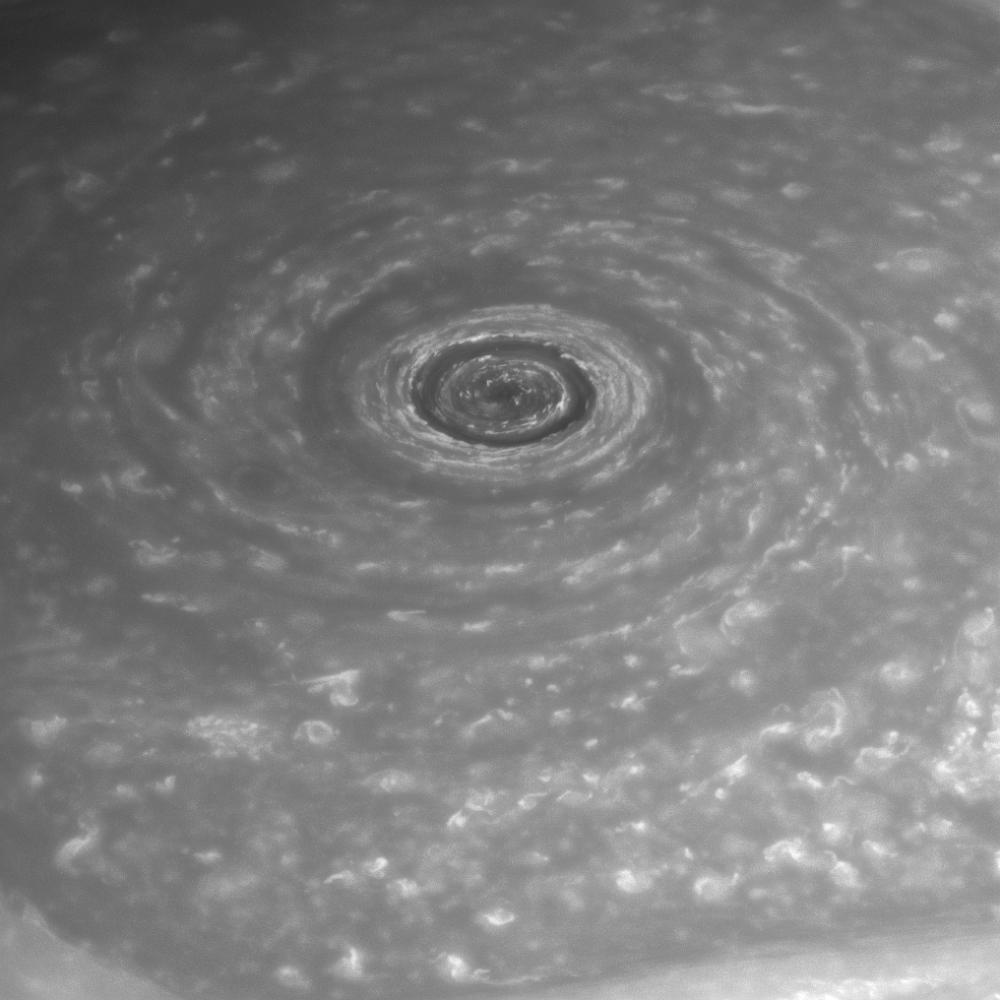Saturn Moon and Glorious Rings Shine in Spectacular NASA Photos

A bright moon of Saturn stands out against the planet's dark background in a photo taken by a NASA probe studying the ringed wonder and its moons.
NASA's Cassini spacecraft took the photo on July 13 while it flew through the Saturn system. The ringed-planet's Death Star-like moon Mimas looks like a bright point of light on the lower left-hand side of the image, and the planet's distinctive rings appear in the middle of the photo, casting a shadow on the body of the planet.
"As if trying to get our attention, Mimas is positioned against the shadow of Saturn's rings, bright on dark," NASA officials wrote in a statement about the image. "As we near summer in Saturn's northern hemisphere, the rings cast ever-larger shadows on the planet." [See more amazing photos of Saturn from Cassini]

Mimas is sometimes known as Saturn's "Death Star moon" because the huge crater on one side of the moon makes it resemble the Death Star weapon of the "Star Wars" movie franchise.
Cassini took the picture when it was about 1.1 million miles (1.8 million kilometers) from the planet and 1 million miles (1.6 million km) from Mimas, according to NASA.
The space agency's probe also captured an amazing view of Saturn's rings against the backdrop of the planet in May. In that photo, the ring plane reflects light from the sun, with Saturn's north pole on display.
Cassini took the May photo when flying about 2 million miles (3 million km) from the planet's surface. Scientists can use the data and images beamed back to Earth by Cassini to learn more about how Saturn's rings formed and why they are the most impressive planetary rings in the solar system, according to NASA.
Breaking space news, the latest updates on rocket launches, skywatching events and more!
The photo taken in May also shows Saturn's hexagon and polar vortex swirling in the north pole of the planet. Scientists think the hexagon is a huge jet stream surrounding a large storm. The jet stream consists of 200 mph winds (322 km/h), and the hexagon is about 20,000 miles (30,000 km) in diameter.
Another Cassini image, released in early August, zooms in on the "eye" of the storm in Saturn's north pole.

"Measurements have sized the 'eye' at a staggering 1,240 miles (2,000 km) across with cloud speeds as fast as 330 miles per hour (150 meters per second)," NASA officials wrote in an image description.
The Cassini mission launched to Saturn in 1997. The $3.2 billion mission has sent back amazing photos of the planet and its moons since arriving in the planetary system in 2004. Cassini is in an extended mission now and should continue collecting data from Saturn until around 2017, before burning up in the planet's atmosphere.
Follow Miriam Kramer @mirikramer and Google+. Follow us @Spacedotcom, Facebookand Google+. Original article on Space.com.

Join our Space Forums to keep talking space on the latest missions, night sky and more! And if you have a news tip, correction or comment, let us know at: community@space.com.

Miriam Kramer joined Space.com as a Staff Writer in December 2012. Since then, she has floated in weightlessness on a zero-gravity flight, felt the pull of 4-Gs in a trainer aircraft and watched rockets soar into space from Florida and Virginia. She also served as Space.com's lead space entertainment reporter, and enjoys all aspects of space news, astronomy and commercial spaceflight. Miriam has also presented space stories during live interviews with Fox News and other TV and radio outlets. She originally hails from Knoxville, Tennessee where she and her family would take trips to dark spots on the outskirts of town to watch meteor showers every year. She loves to travel and one day hopes to see the northern lights in person. Miriam is currently a space reporter with Axios, writing the Axios Space newsletter. You can follow Miriam on Twitter.
